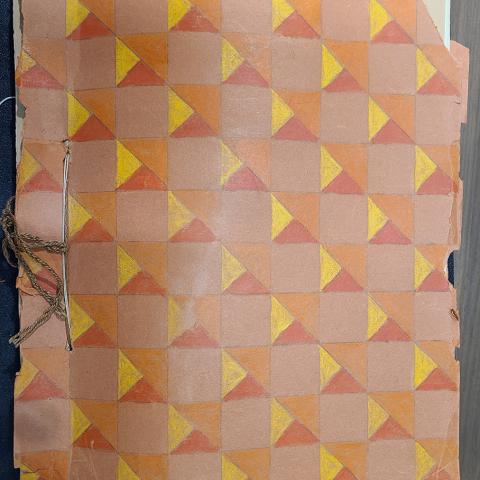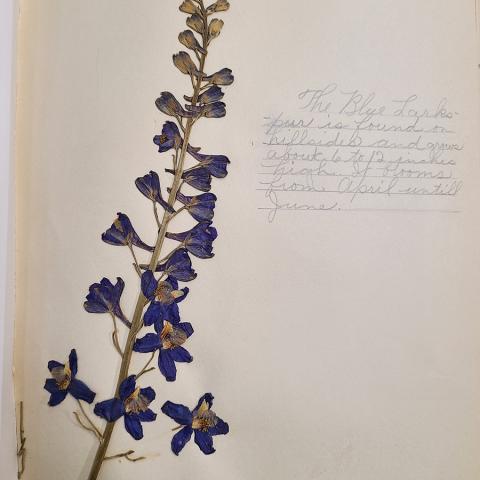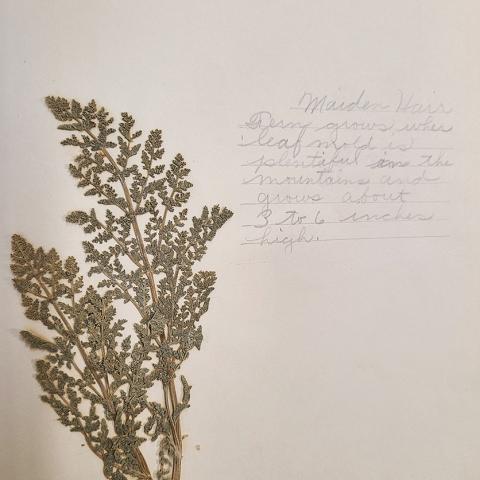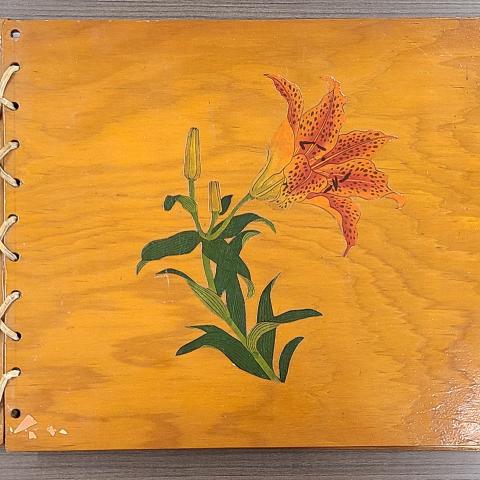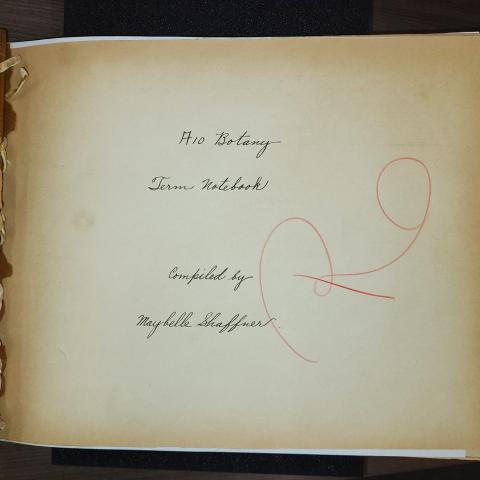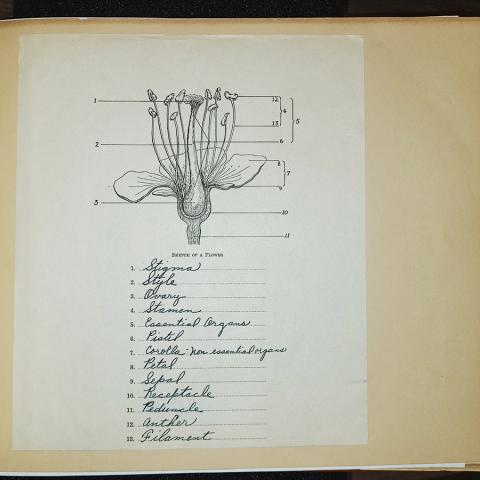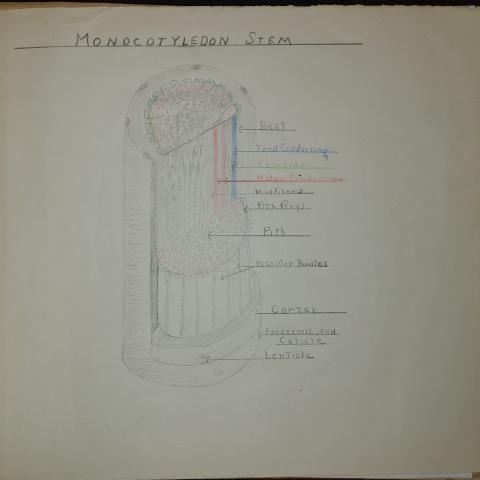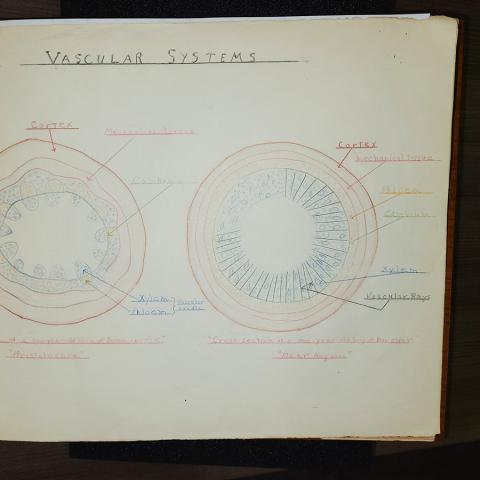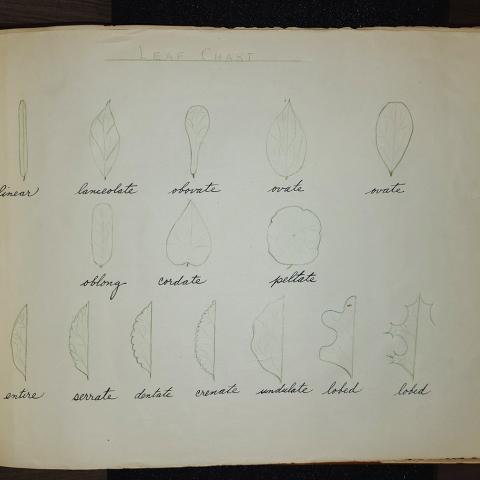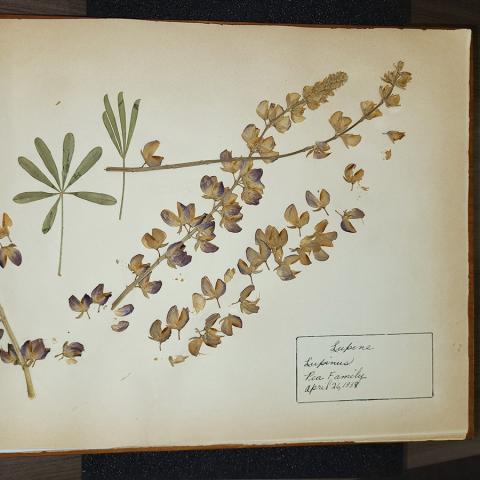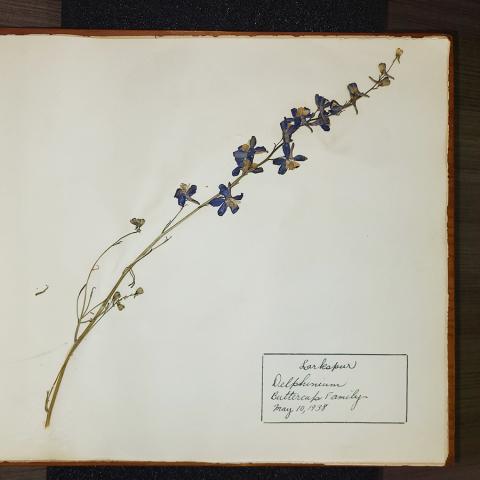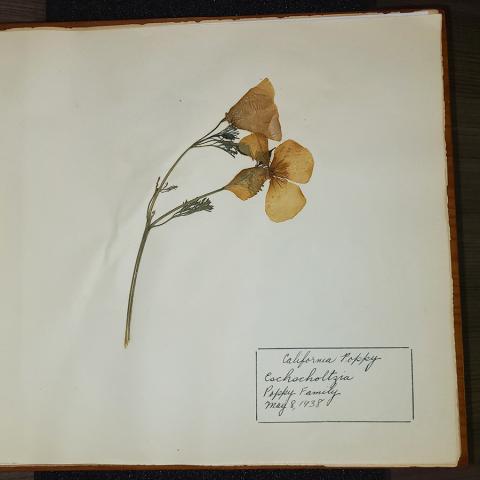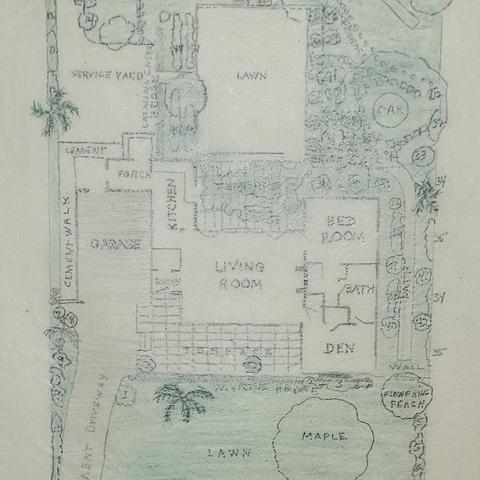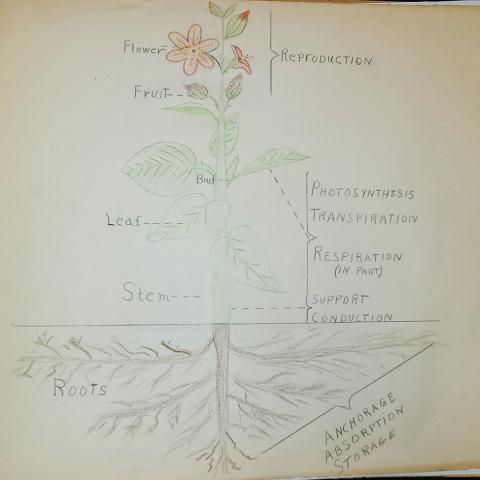“Study nature, not books:” Maybelle Shaffner’s Southern California Herbaria
by Philip W. Walsh, Ph.D., Lecturer, Department of Interdisciplinary Studies and Liberal Studies - April 08, 2025
The Baldwin-Shaffner Family Collection documents the lives of the Baldwin, Shaffner, Bishop and Bacon families from the middle of the nineteenth century until the beginning of the twenty-first. These families were part of the post World War II housing boom in Southern California, particularly in Saugus and the Santa Clarita Valley, after World War II. Materials in this collection consist primarily of correspondence, ledgers, photographs, and ephemera, including two herbaria created by Maybelle Shaffner.
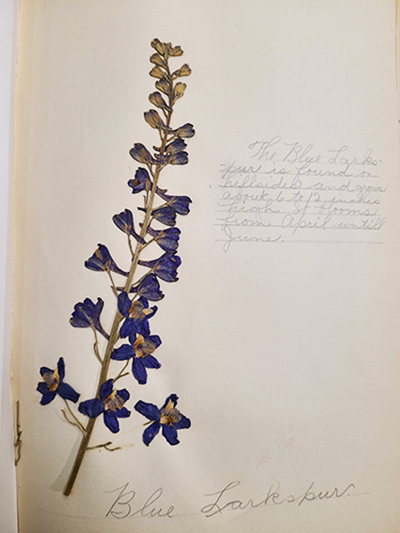
Maybelle, who created them, was the great-great granddaughter of Amos Baldwin. His granddaughter Edith married Seth Sackett, who joined the Gold Rush to the Pacific coast in the 1850s. Edith and Seth’s granddaughter Maybelle, born in 1923, graduated from San Fernando High School in 1940, after which she worked for the Pacific Bell Telephone Company. She also served on committees for several school, community, and civic groups. She married Eugene Bishop, who was a teller and then a loan officer for Bank of America, in 1945, and they moved into the house on First Street in Los Angeles where Maybelle and her siblings had grown up. Their daughter Jannette was born in 1960, and their son Donald in 1963. After Jannette’s birth, Maybelle left the phone company, and Eugene retired from the bank, so that they could develop properties to help alleviate and profit from the post- World War II housing shortage. Maybelle died in 2021.
Maybelle’s two herbaria were created in elementary school and high school. Herbaria typically contain plants gathered from the field, which are then pressed between sheets of absorbent paper to dry them; they are then glued onto the pages of the herbarium. As these herbaria were school projects, not intended for permanent preservation, the pages are brittle and the plants faded, but some of the flowers have retained the bright colors of their petals.
The specimens in the earlier herbarium are arranged by the common names for plant families, such as the daisy family, while the later collection labels them by their scientific names, some of which are no longer in use, as well as their common names. 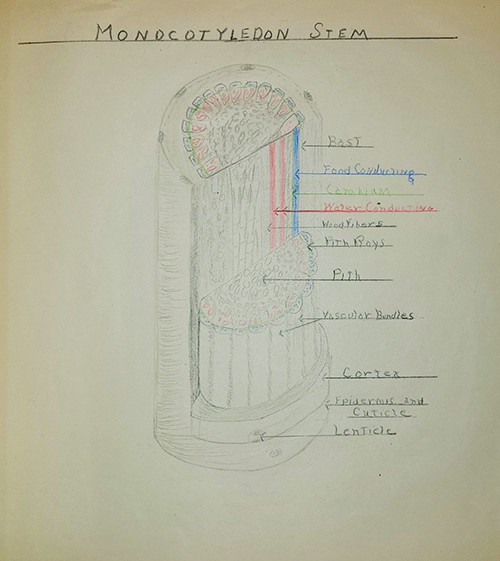 The later collection contains sketches by Maybelle of the parts of a plant, including cross sections of monocotyledon and dicotyledon stems. These specimens were most likely gathered in the San Fernando Valley. Some of them, such as rosemary—which Shaffner calls by its Spanish name, “romero”—are not native to the region, and were probably taken from a garden. Most of the other specimens are not domesticated plants and were most likely collected in the wild; these species can still be found in the Los Angeles area today.
The later collection contains sketches by Maybelle of the parts of a plant, including cross sections of monocotyledon and dicotyledon stems. These specimens were most likely gathered in the San Fernando Valley. Some of them, such as rosemary—which Shaffner calls by its Spanish name, “romero”—are not native to the region, and were probably taken from a garden. Most of the other specimens are not domesticated plants and were most likely collected in the wild; these species can still be found in the Los Angeles area today.
These herbaria, and the teaching of the natural sciences in general, are outgrowths of the nature study movement of the United States, which began in the nineteenth century. This movement, which, in the words of one of its founders, geologist Louis Agassiz, exhorted students to “study nature, not books,” took as its inspiration the writings of Henry David Thoreau, John Muir, and other American naturalists. It became so popular that by 1925 nearly every school in the country included some form of nature study in its curriculum. Its pedagogy encouraged teachers to take students out on field trips—a phrase which originated in the United States in 1883, in this context—that they might wander through the terrain, observing, in place, plants, rocks and minerals, and animals, or, as in this case, collect specimens for preservation and classification. Other organisms might be collected in order to observe their life cycle or—for boys only—dissection. The nature study movement declined in the years leading up to World War II, as science education began to emphasize the hard sciences, but it lives on the field trips taken by students today, in the aquaria and terraria still found in many classrooms, and in Maybelle Shaffner’s herbaria.
To view these two herbaria in person please visit the Special Collections & Archives reading room.
Image Gallery
Post tagged as: urban archives, archives, ephemera, san fernando valley
Read more Peek in the Stacks blog entries
